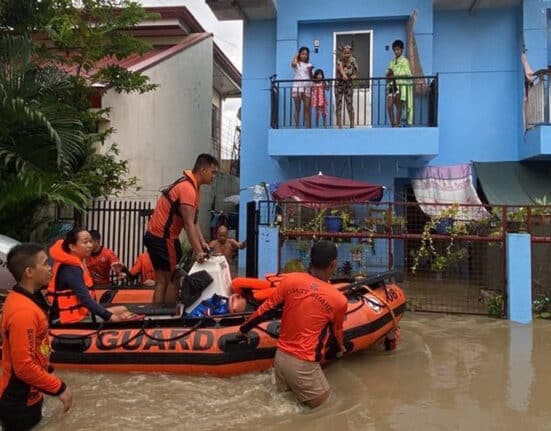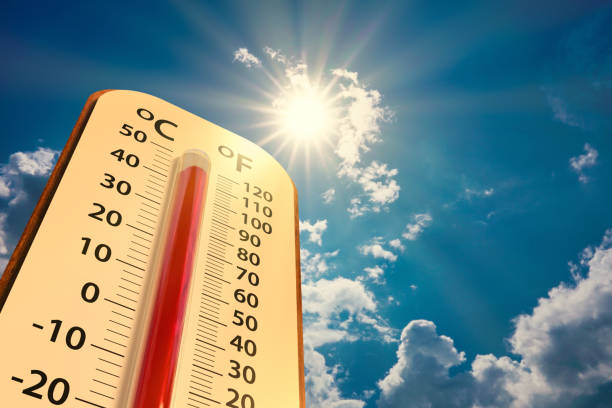BRACE for more intense and catastrophic weather events such as droughts and heavy rainfall, as a recent study revealed that there have been more frequent and larger “hydroclimatic events” as global warming increases.
Hydroclimatic events are the effects of large bodies of water on the climate.
The study, which was recently published in the Nature Water journal, revealed that for the past 20 years, there has been a sharp increase in the frequency and severity of extreme drought and rainfall across the world.
“Total intensity of extreme events was strongly correlated with global mean temperature,” it said.
This suggests that continued global warming “will cause more frequent, more severe, longer/and or larger droughts and pluvials,” it added.
Extreme events
The researchers examined 1,056 incidents that occurred between the years 2002 and 2021 using satellite observations and an innovative algorithm that pinpoints locations on the land that are much wetter or drier than average.
The study showed “distortions” in the water cycle, and said this was a clear consequence of climate change.
SUGGESTED STORIES:
DSWD to provide psychosocial support for teen moms
ON Wednesday, the Department of Social Welfare (DSWD) announced an.
Atasha Muhlach’s P100 allowance back in the day
IN A RECENT episode of Eat Bulaga’s “Peraphy” game on.
LIST: On-site class suspension for April 25-26, 2024
WITH temperatures continue to rise, several areas in Metro Manila.
Their report indicated that sub-Saharan Africa had the heaviest rains, at least until December 2021, which was when the data stopped being collected. Very high rainfall also occurred in the central and eastern parts of North America from 2018-2021, as well as in Australia during the years 2011-2012.
However, drought outweighed heavy rain events by a 10 percent margin. Similarities existed in their scope and duration, the report said.
“I was surprised to see how well correlated the global intensity was with global mean temperatures,” study author Matthew Rodell said in a report.
Worsening floods
A separate study said the worsening condition of floods and droughts across the world was also a result of greenhouse gas emissions from human activities.
“The frequency and intensity of hydroclimatic events, such as extreme precipitation and droughts, are increasing due to human-induced greenhouse gas emissions,” said study author Melissa Rohde.
According to the United States Environmental Protection Agency, some of the human-induced greenhouse gas emissions came from the burning of fossil fuels for electricity, heat, and transportation.
As per the study, the water cycle becomes more intense as a result of climate change, which in turn worsens the evaporative demands that occur during dry episodes. This likewise increases the amount of atmospheric moisture that causes heavy rainfall.
The study also noted that every continent is affected by these severe weather changes, which can have negative effects on human health and lead to economic losses, damage to infrastructure, crop failure, and destruction of ecosystems, in addition to precipitating humanitarian crises such as food insecurity and conflict.
The Philippine condition
The Philippines has experienced its fair share of extreme weather events in recent years.
On average, 20 typhoons hit the country yearly, with some of them becoming “super typhoons.”
In a 2021 report by Amnesty International, the Philippines ranked first as the country most at risk from the climate crisis, with an 8.5 overall natural hazard score.
“[The Philippines’] geography is one of the main factors for being most at risk from the effects of the climate crisis,” Amnesty International said.
Aside from its geographical setting, the extreme weather in the country is one of the main reasons why the Philippines is at risk from the climate crisis.
La Niña season ends
The country’s state weather bureau recently announced the end of La Niña or the cooler weather pattern. Since the onset of La Niña in October 2021, the country experienced various super typhoons including Super Typhoon Odette which struck various provinces in the Visayas and Mindanao in December 2021, and Super Typhoon Karding which wreaked havoc in Luzon in October 2022.
These had caused billions of pesos worth of damage to agriculture, and led to many fisherfolk and farmers losing their sources of livelihood.
With the worsening climate conditions, there is an increased likelihood of a transition to El Niño or a warm weather pattern afterward.
This raises the possibility of weather with below-normal rainfall, which may cause dry spells and droughts in some regions.
But the weather bureau also put out an alert saying that even though La Niña has ended, its persistent impacts may still lead to events with above-normal rainfall in the coming months, particularly in locations that are particularly susceptible to the effects of climate change.
Health effects
With the impending transition to El Niño and in time for the summer season where heat temperatures may reach up to 42°C, the Department of Health warned the public about the risks of heat stroke.
Heat stroke is a medical condition where the body temperature rises to extremely high levels as a result of prolonged exposure to heat.
It can swiftly cause damage to the brain, heart, kidneys, and muscles if people do not get treatment immediately, the DOH said in an advisory.












